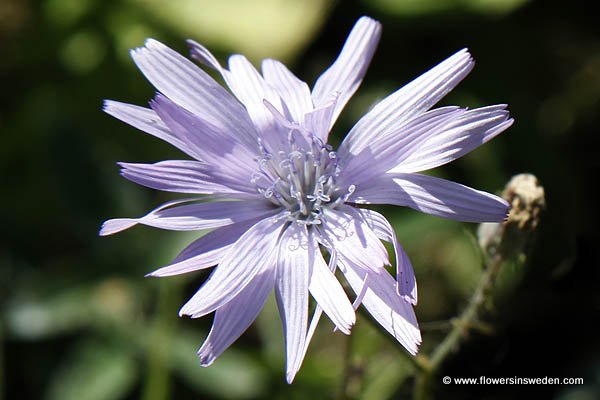|
|
| Life form: |
| Perennial herb |
| Stems: |
| Height 50-200 cm, usually unbranched, reddish brown, upper part with glandular hairs |
| Leaves: |
| Alternate; lowest leaves usually pinnate, terminal leaflet larger than rest, broadly triangular, uppermost leaves entire, long-tapered |
| Inflorescence: |
| Corymbose cluster |
| Flowers: |
| Hermaphrodite; Single flower-like capitula approx. 2.5 cm broad, surrounded by involucral bracts; capitulum flowers light blue–bluish violet (occasionally white), tongue-like, tip 5-toothed; stamens 5; gynoecium composed of 2 fused carpels; involucral bracts in many rows, triangular–tapered, with glandular hairs, purplish–dark |
| Flowering Period: |
| July, August |
| Fruits: |
| Linear, flat cypsela, crowned by unbranched hairs |
| Habitat: |
| Moist soil in the birch forests, stream valleys and verdant pine forest |
| Distribution: |
| From Dalarna to Torne Lapland |
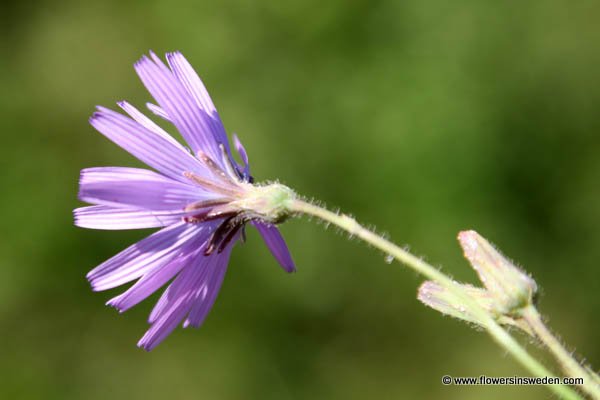
Derivation of the botanical name:
Cicerbita, Cicharba, in Marcellus Empiricus, De Medicamentis, name of a plant thought to be a species of Sonchus (Marcellus Empiricus also known as Marcellus Burdigalensis (“Marcellus of Bordeaux”), was a Latin medical writer from Gaul at the turn of the 4th and 5th centuries.).
alpina, of alps, mountains.
- The standard author abbreviation L. is used to indicate Carl Linnaeus (1707 – 1778), a Swedish botanist, physician, and zoologist, the father of modern taxonomy.
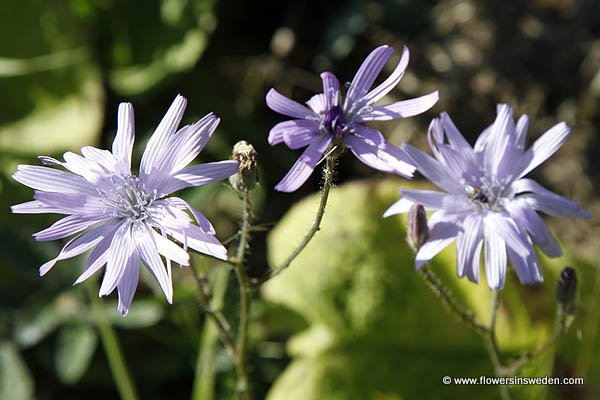
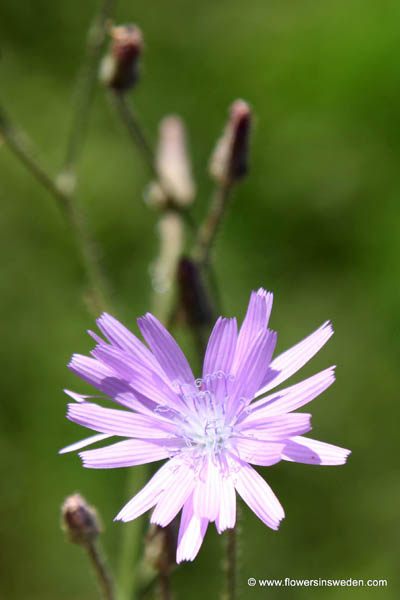
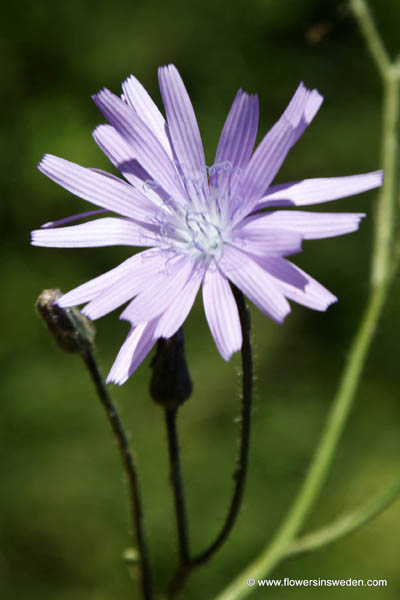
|
